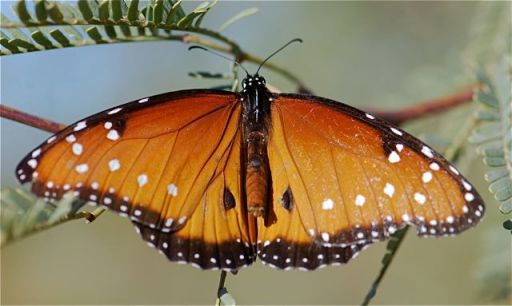 This weekend we were inspired by an absolutely gorgeous new picture book, A Butterfly Is Patient by Dianna Hutts Aston and illustrated by Sylvia Long. (See review at Wrapped In Foil.)
This weekend we were inspired by an absolutely gorgeous new picture book, A Butterfly Is Patient by Dianna Hutts Aston and illustrated by Sylvia Long. (See review at Wrapped In Foil.)
Aston and Long have collaborated on two other wonderful books, A Egg is Quiet and A Seed is Sleepy. If you are familiar with those books, you will know to expect extraordinary illustrations and accurate, age-appropriate information written in lyrical text. In this book all about butterflies, they have outdone even themselves. A Butterfly Is Patient is definitely inspiring!
Activities to learn more about butterflies:
1. Study Caterpillar and Butterfly Anatomy
Have you ever spent time actually studying the parts of a caterpillar or butterfly? I know, it may be hard to look past the bright colors and beauty, but studying how these animals go together helps you appreciate them in a different way.
Try to find a smooth caterpillar like this tobacco hornworm (some of the fuzzy or spiky ones have stinging hairs, so don’t pick up those.) Gently coax it onto a leaf or stem where you can observe it with a hand lens. See if you can find the following organs and structures.

In this side view of a moth caterpillar, we can see the thorax (the three segments right behind the head), and the abdomen quite clearly. The thorax is where we find the six true legs, which are the identifying characteristics of insects. What are those fleshy appendages on the abdomen, aren’t those legs? From a scientific perspective, those are not true legs, but are called prolegs. They are used for walking and clinging to leaves just like legs, but they lack the joints of a true leg. As you will see, the adult will have only the true legs.
The small circles on the sides of the caterpillar are spiracles, the openings through the insect’s exoskeleton that allow it to take in air.

In this view, we can see the caterpillar’s head. At the bottom of the head are the mandibles, the pruning scissor-like jaws that it uses to cut food. Slightly above and to the side of the jaws are the ocelli, which are simple eye spots. The caterpillar probably doesn’t see much with those tiny spots, maybe only whether it is light or dark out. This photograph shows a better view of the jointed legs.
After the caterpillar transforms into a pupa and then a butterfly, we see different structures.

What a transformation!
Instead of tiny ocelli on its head, the butterfly has large compound eyes. The mouth has become a long tube for sucking nectar from flowers (some butterflies actually lack a mouth altogether). There were antennal buds on the head of the caterpillar, but now the butterfly has full blown antennae.
The true legs are long and delicate and the prolegs are gone. Attached to the thorax are the wings. If you read a book about how to identify butterflies, it will probably describe markings on the upper or forewings, or the lower hind wings. The raised structures in the wings, called wing veins, are also important for identification.

Can you find the mouthparts and the spiracles on this giant swallowtail butterfly?
Activity 2. Butterfly Life Cycle
Butterflies go through a complex series of changes during the life cycle, a process called complete metamorphosis.
Let’s explore the life cycle of the queen butterfly, and then make a poster.

The queen butterfly starts out life as an egg laid by the female butterfly on a milkweed plant.

A caterpillar emerges from the egg, and begins to feed on the plant.

When it has reached its full size, the caterpillar transforms into a chrysalis.

After a week or so, out comes the adult butterfly.
Use this information to prepare a butterfly life cycle poster, perhaps like this one from Enchanted Learning.
For more photographs, try these related posts:
Activity 3. Raise a butterfly or moth
At some point in their childhood, most budding scientists raise a caterpillar to find out what it turns out to be.
- You might want to start with silkworms, which can be raised on an artificial diet or mulberry leaves.
- Learn the ins and outs of raising caterpillars.
Activity 4. Make a colorful coffee filter butterfly craft here at Growing With Science
Activity 5. Butterfly gardening
It is amazing that you can bring butterflies into your yard by planting a few special plants. You can then watch the life cycles in a more natural setting.
Some butterfly favorite plants are:
- milkweeds (monarchs, queens)
- lantana
- butterfly bush
- ageratum (attracts male queen butterflies)
- dill, fennel or parsley (swallowtails)
- hollyhocks (painted lady)
- passion flower (fritillaries)
For more ideas, see our butterfly gardening post.
Monarch Watch has lesson plans, a ton of information about monarchs, and ideas for more activities.
And don’t forget to read some books about butterflies, including the gorgeous A Butterfly Is Patient by Dianna Hutts Aston :
by Dianna Hutts Aston :

 (Affiliate links go to Amazon, this book was provided for review purposes)
(Affiliate links go to Amazon, this book was provided for review purposes)
Plus, our growing list of books about butterflies and moths at Science Books for Kids.

As well as Aston and Long’s other lovely books, A Seed Is Sleepy and
and


An Egg Is Quiet






















